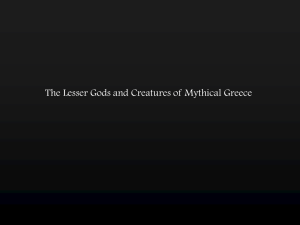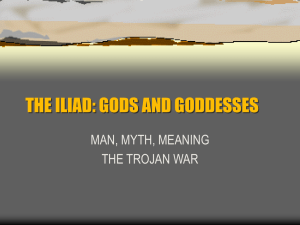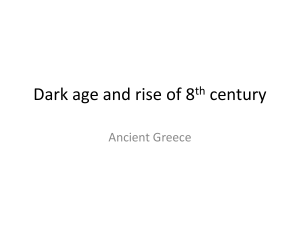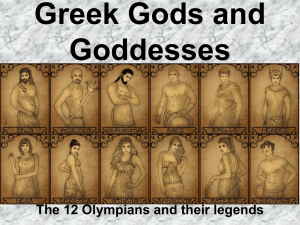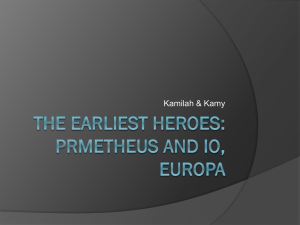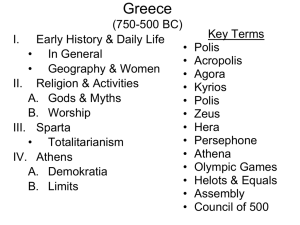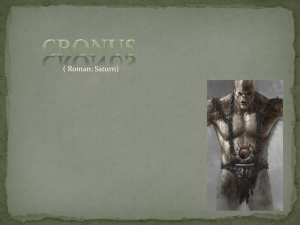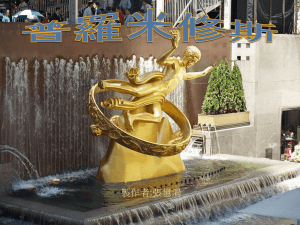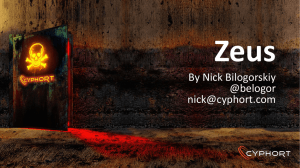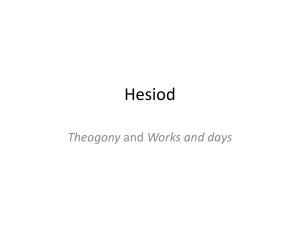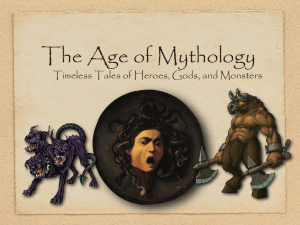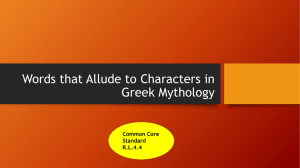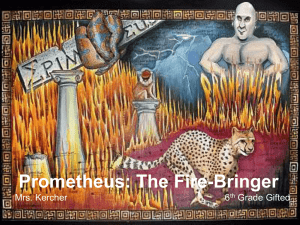Zeus Olympios
advertisement
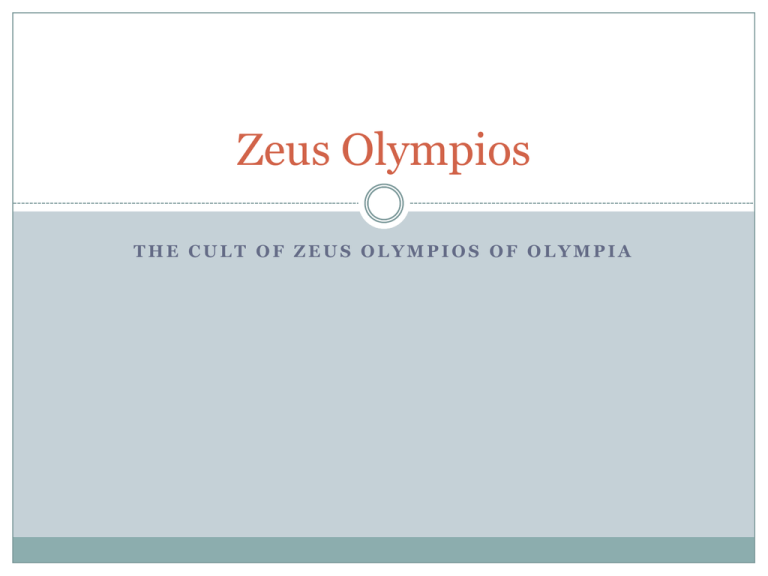
Zeus Olympios THE CULT OF ZEUS OLYMPIOS OF OLYMPIA Olympia Name derived from Mount Olympos Highest mountain in Greece and mythological home of the gods. Located in a strategic area of the Peloponnese Religious sanctuary owned and operated by city-state Elis Provided priests and officials Olympia continued… One of the most significant historical sites in the world. Archaeological import Starting and reference point in global record of sport The finest place in Greece. Lysias The Oracle of Olympia 7th and 8th century B.C.E was a time of warfare between expanding city-states A sacred truce was struck between secular political leaders in the Peloponnese Wisely placed this truce under the security of the sanctuary To the ancient Greeks, this allowed for the inception of regularly scheduled athletic competitions The Olympic Games According to Pausanias, first games were held as early as 776 B.C.E and continued as late as 293 C.E. Over 293 Olympiads were held during this 1,169 year period Archeological evidence places the start date of the games closer to 700 B.C.E Original games had one event, a 192 meter footrace the length of the Stadium By 200 B.C.E another 18 events had been added to the games, including a competition for heralds and trumpeters. Foundation of Olympic Games There are many different versions of the inception of the games. Some are secular and historical while others present a mythological explanation of the contests. Secular Held to honor important dead kings or heroes Means to distribute the belongings of the dead decide the heir to the throne after a kings death Prehistoric hunting rituals Rites of passage Olympic games continued… Religious & Mythological explanations First games a celebration of Zeus’ overthrow of his father Cronus Apollo, Hermes, and Ares were the competitors Poet Pindar offers several explanations Heracles consecrates the Altis to his father Zeus and founds the games at the tomb of Pelops Pelops victory in a chariot race over Oenomaus for his daughter Hippodamia Zeus’ oversight “Island of Pelops,” the Peloponnesus The Classical Period Victory in the Persian Wars allowed for the flourishing of the Greek civilization and culture Evident in dedications made at Olympus Spoils of war combined with dedications made as a result of the victory allowed for enormous growth in the cult worship of Zeus Early dedications to Zeus had a militaristic quality. Later dedications were more diverse in their depiction of Zeus Zeus Olympios Father of gods and men Personification of authority and order Won his position through hard struggles, namely with father Cronus Typically depicted as either a warrior holding a spear and lightning bolt or as a king seated on a throne Wielded Power, supported powerful kings, tyrants, and monarchs. Gave victory in both war and his own games This aspect is what sets Zeus Olympios apart from other Zeus epithets “Zeus is air, Zeus is earth, Zeus is the sky, Zeus is everything, and whatever exists superior to it.” -Aeschlus Temple of Zeus Until the Olympiad of 476 B.C.E., Zeus Olympios was likely worshiped at his open air altar. Temple construction financed by the Eleians and also from the income of the sanctuary itself Completed by 457 B.C.E. Eleian architect Libon West Pediment of Temple Depicted the battle between the Lapiths and the Centaurs In this myth, the Lapiths represent rule and order and are victorious over the Centaurs that symbolize chaos and evil. East Pediment of Temple Depiction of the the chariot race between Oinomaos and Pelops The scene is the moment before the chariot race begins. Zeus is placed in the middle, set to judge the competition. Competitors are on either side of him, as well as the horses and the servants preparing them. Two prophets are seated on the ground, one with an especially grim gesture. The Chryselephantine Statue of Zeus Completed by Athenian sculptor Pheidas Made of gold (chrysos) and ivory (elephas) Zeus’ hair, beard, and robes would have been coated in gold sheet The exposed skin of the statue would have attached ivory plates Taken to Constantinople in early 4th century C.E. to decorate the new capital of the Roman empire. Destroyed in a fire in 475 C.E. Chryselephantine Statue of Zeus continued… The finest of all the statues that exist in the world [the Zeus of Olympia] and the most dear to the gods” – Dion Chrysostom Chryselephantine Statue of Zeus continued…

